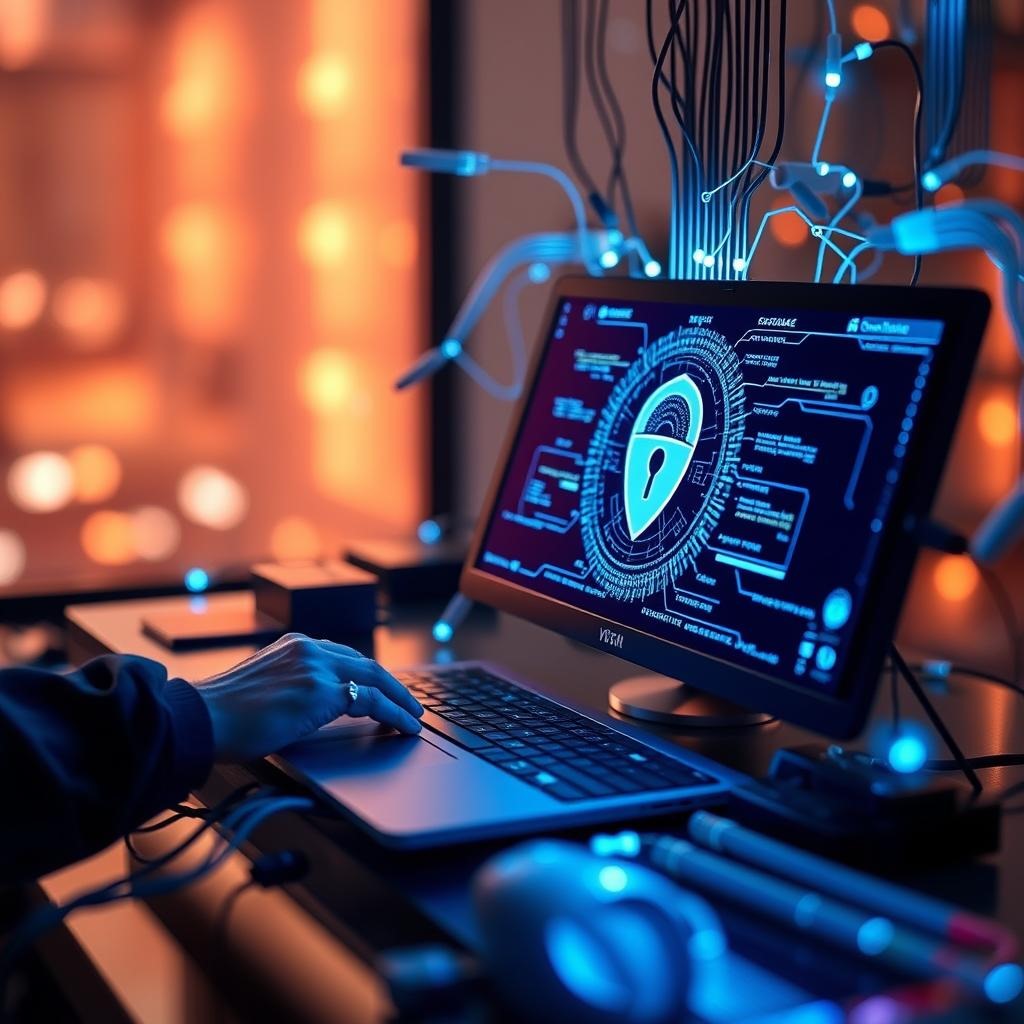Building a Solid Foundation in Cybersecurity: Core Techniques.
 ARJUN M
ARJUN MTable of contents
- 1. Foundations in Computers, Linux, Web, Networks, Servers, Windows, Hardware, and Security Concepts
- 2. Introduction to Cybersecurity
- 3. Security Essentials: A Deeper Dive
- 4. Linux Security for InfoSec Professionals
- 5. Hacker Techniques: Dynamic Approaches to Security
- 6. Monitoring & Detection
- 7. Scanning Packets & Networks
- 8. Network Intrusion Detection
- 9. Monitoring & Operations
- Conclusion

In today’s increasingly digital world, cybersecurity is a critical discipline. From the growing threats of data breaches to the need for secure systems, organizations require individuals well-versed in a wide range of cybersecurity areas. Below, we'll explore the key foundations and specialized topics essential for anyone aiming to excel in the cybersecurity field.
1. Foundations in Computers, Linux, Web, Networks, Servers, Windows, Hardware, and Security Concepts
A solid understanding of computer systems, networks, and security is fundamental for cybersecurity professionals. Knowing how operating systems like Linux and Windows work, along with network protocols, server architecture, and hardware functions, provides a comprehensive approach to securing infrastructure.
Computers & Operating Systems: Master Linux and Windows for managing secure environments.
Networks & Servers: Learn network communication and secure application hosting.
Web Security: Understand web application functionality and vulnerabilities.
Hardware & Security Concepts: Explore hardware configurations and foundational security principles for enhanced system protection.
2. Introduction to Cybersecurity
Before delving into specific areas, it's essential to have a general understanding of cybersecurity. This includes studying digital threats, vulnerabilities, and the methods attackers use to exploit weaknesses. Topics like malware, ransomware, phishing, and social engineering are fundamental in this stage.
3. Security Essentials: A Deeper Dive
Security is a constantly evolving field that demands a deeper understanding of key areas to stay ahead of emerging threats. Network analysis is fundamental in identifying unusual patterns and assessing network traffic for potential risks. As threats become more sophisticated, advanced threat detection skills are crucial for timely responses. Safeguarding systems from unauthorized access through robust system security measures is equally important. Additionally, maintaining compliance with industry regulations through audit & compliance ensures that security standards are consistently met. Cryptography plays a critical role in protecting sensitive information, while effective recovery plans are essential in disaster scenarios. Both Windows and Linux environments require specific security protocols tailored to their unique architectures. Leveraging automation in security enhances threat detection and mitigation, reducing response times and human error. The understanding how attackers exploit vulnerabilities through exploit techniques provides the insight needed to deploy effective defense strategies that can protect against these attacks.
4. Linux Security for InfoSec Professionals
Linux is a go-to operating system for security professionals due to its flexibility, open-source nature, and strong community support. Mastering Linux security is essential for handling secure server environments and monitoring network activity.
Command Line Mastery: Get comfortable with the Linux command line to execute tasks quickly and efficiently.
File and User Access Control: Implement file permissions and user access control to prevent unauthorized access.
5. Hacker Techniques: Dynamic Approaches to Security
Understanding how hackers think is crucial for cybersecurity professionals. By learning hacker techniques, you gain insight into potential attack vectors and develop a defensive mindset. These techniques involve identifying vulnerabilities within networks or systems and exploiting weaknesses in real-time using a dynamic, ever-adapting approach. Knowing how they work helps you stay one step ahead, making it easier to protect your digital assets.
6. Monitoring & Detection
Constant vigilance is required in cybersecurity, especially when it comes to monitoring network activity and detecting intrusions. Mastering tools for Intrusion Detection (IDS) and Intrusion Prevention Systems (IPS) is critical.
- Monitoring Over Time: This involves analyzing changes in network traffic and system behavior over time to detect anomalies and potential intrusions.
7. Scanning Packets & Networks
Packet and network scanning is essential for detecting potential vulnerabilities and monitoring network activity. Mastering tools like Wireshark and Nmap allows you to:
Capture and analyze packets flowing through a network.
Detect malicious activity or misconfigurations in real time.
8. Network Intrusion Detection
Traffic analysis and zero-day vulnerabilities are critical components of network intrusion detection. This includes identifying malicious traffic, configuring IDS/IPS systems, and applying custom monitoring to suit specific environments.
Traffic Analysis: Understand data flow across a network to detect irregular patterns.
Zero-day Identification: Learn how to identify and protect against unknown vulnerabilities before exploiting them.
9. Monitoring & Operations
Cybersecurity professionals must focus on building robust network architecture that includes continuous monitoring for suspicious activities.
Automation: Automate repetitive security tasks to maintain an always-on monitoring system.
Continuous Monitoring: Set up a robust architecture that supports 24/7 monitoring and rapid response to threats.
Conclusion
Cybersecurity is a constantly evolving field that demands professionals to stay updated and adaptable. From learning the core fundamentals of networks and systems to understanding advanced threat detection and continuous monitoring, the journey is vast but essential. By mastering these concepts, professionals can build secure, resilient systems that stand strong against ever-growing digital threats.
Subscribe to my newsletter
Read articles from ARJUN M directly inside your inbox. Subscribe to the newsletter, and don't miss out.
Written by

ARJUN M
ARJUN M
Not a normie guy, Level 21, Btechie - IT, Dive into Cybersec & networks:)